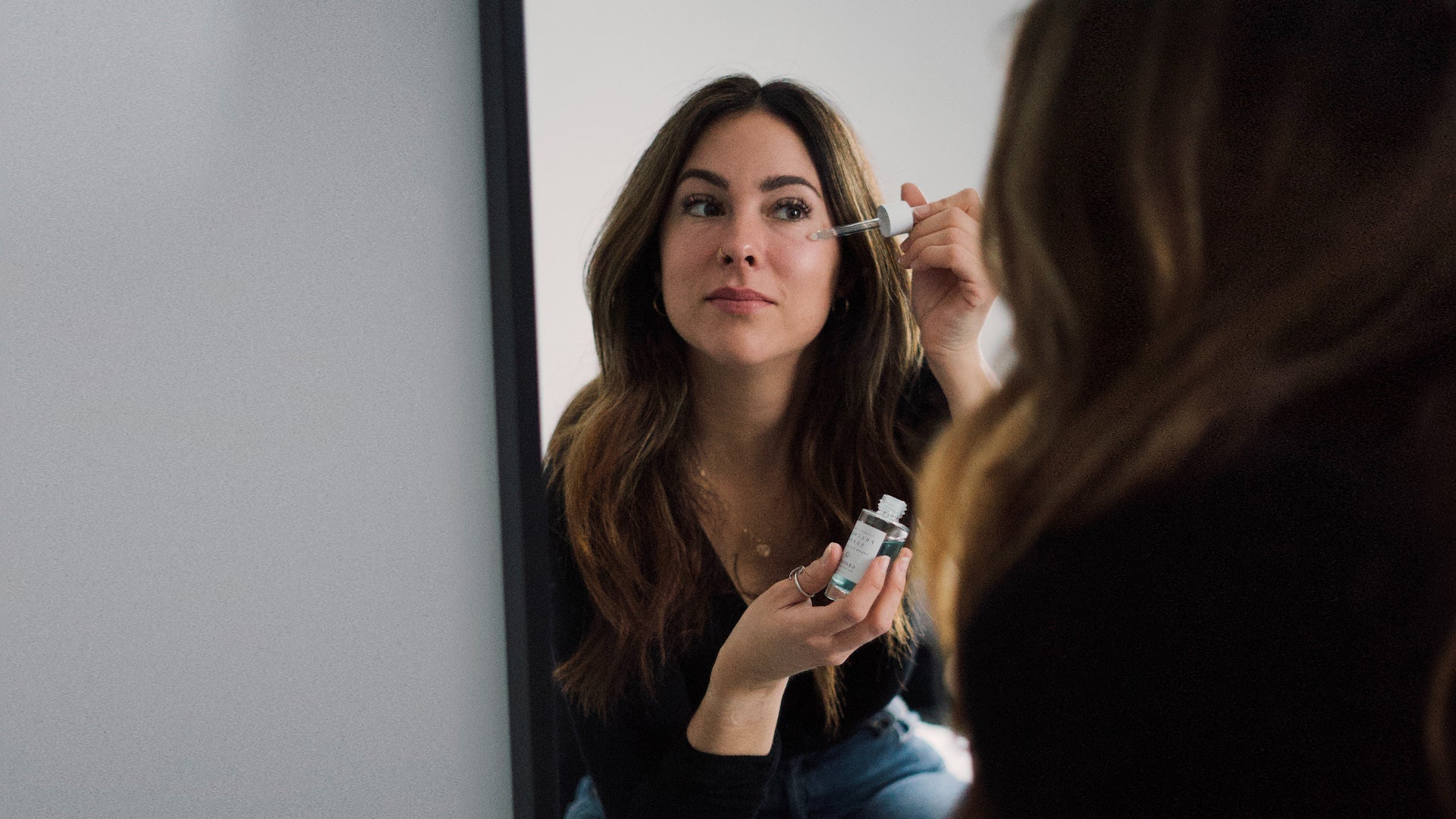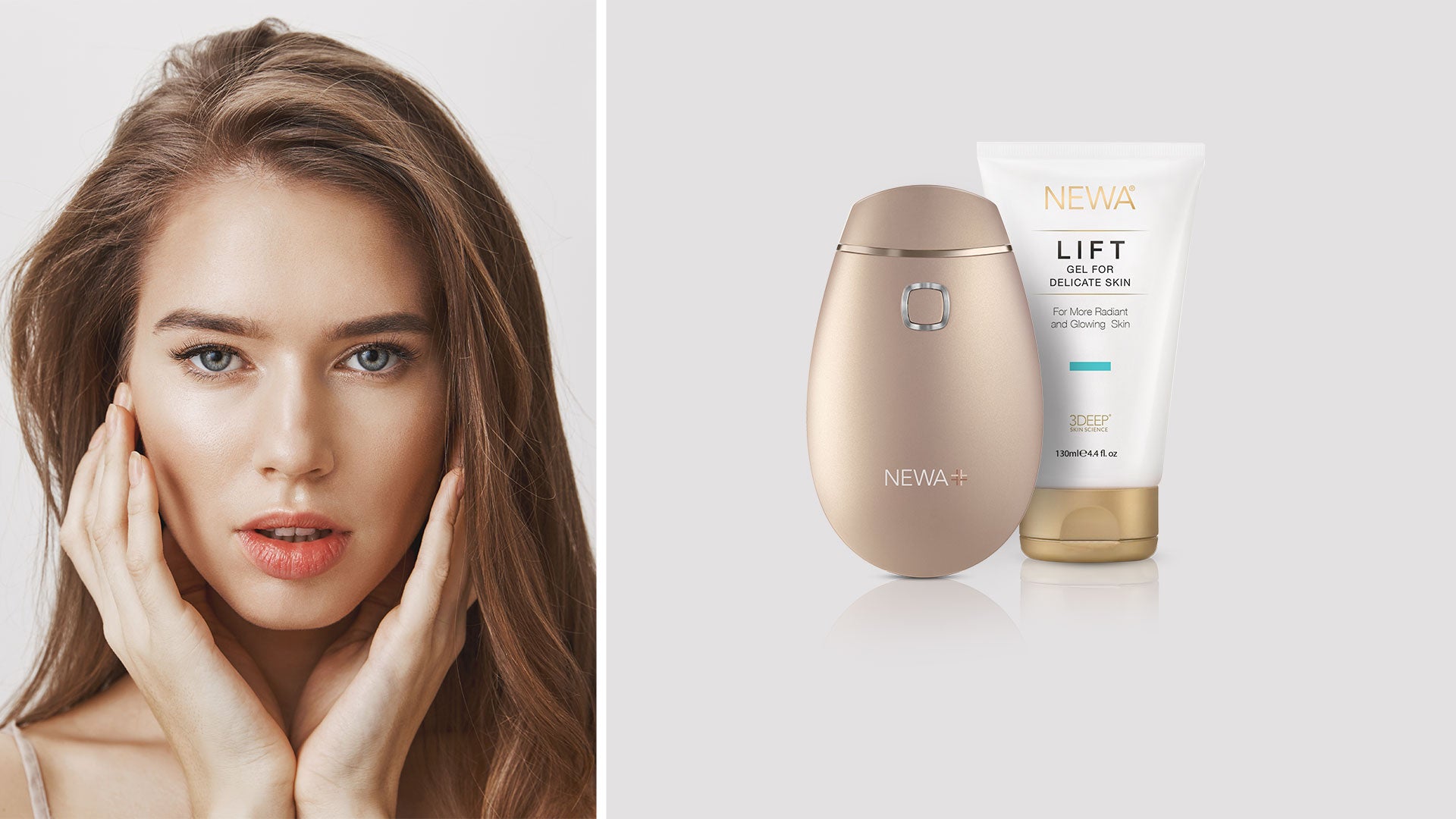Welcome back to the blog! We hope all those celebrating had a wonderful holiday and got to spend time with your friends and family.
We’re headed into a New Year and many of you may be wishing to address skin concerns or up your skincare game. With that in mind, we’re doing a two part blog post all about skin aging!
If you haven’t already, you’ll want to read our Facial Aging Deep Dive. There, we discuss the types of aging and underlying factors - and just as important, the aging process in the different facial tissues.
This post and the follow-up is going to be specific to skin. In particular, we will be covering the dermis, the deeper skin layer and the target of your NEWA treatments. And where topical skincare often can’t address effectively.
This first post on the dermis will mainly center on skin elasticity and how to tighten the skin. Then stay tuned for Part 2, a look at skin firmness and collagen!

The Skin

Our skin serves as an important barrier, protecting the body against both mechanical trauma and environmental factors like UV rays. It also keeps moisture in while keeping pathogens and allergens out.
The skin has two main layers, the more superficial epidermis and then the dermis below. Your epidermis is also impacted by the aging process but much of this can be prevented by regular sunscreen use and good skincare.
The dermis, however, is another matter. Most topical products don’t reach the dermal layer and can’t trigger the necessary collagen synthesis needed to make up for what we lose each year. For that reason, it will make up the focus of this mini series.
The Dermis

The dermis is broken up into two regions, the papillary dermis and the reticular dermis beneath. The dermis is thicker than the epidermis and offers more cushion. The papillary dermis provides nutrients to the skin cells in the epidermis and helps regulate temperature. Meanwhile, the reticular dermis provides structure and elasticity to the skin.
Because the dermis makes up about 90% of the skin’s total thickness, age related changes are more visible. If you’re noticing that your skin seems to be thinning and also lacking firmness or elasticity, it could be due to changes in this part of the skin.
The dermal structure is primarily made up of collagen, elastin, and glycosaminoglycans like hyaluronic acid. Collagen content in the skin has been shown to decrease about 1% per year, resulting in a loss of skin firmness and can contribute to wrinkles too. Elastin loss, on the other hand, can contribute to skin sagging.
Skin Elasticity
Elastic fibers in the dermis are made up of the protein elastin. These fibers are what provide stretch and elasticity to our skin. Along with collagen and glycosaminoglycans, they are essential for skin structure and function. The health of the dermis and its components also contribute to a youthful appearance
The tricky part with elastin is that it has a slow turnover. This means that your skin isn’t producing it frequently - so when it’s damaged by things like UV rays, your skin isn’t going to just make more. And unlike with collagen, it’s more difficult to trigger the formation of new elastin.
Don’t forget though that facial sagging isn’t always the same as sagging skin. Read more here.
Skin Tightening

So how can we improve skin elasticity for a more lifted appearance?
First, you’ll want to be sure that you’re protecting your existing elastin. Sun protection and antioxidants are going to be your friend. Apply a broad spectrum SPF 50 sunscreen correctly and use antioxidants like Vitamin C and niacinamide underneath.
If you’re a woman approaching menopause, you’ll also want to discuss estrogen deficiency and treatment options with your doctor. In addition to accelerating collagen loss, low estrogen levels in the skin can lead to structural changes in elastin fibers too.
Aside from prevention, you’re going to be very limited when it comes to skincare and skin elasticity. Despite the many ads you may have seen promoting skin tightening creams, only retinoids like retinol (and beta glucan to some extent) have data supporting their ability to trigger elastin production. Most creams just offer a temporary cosmetic effect at most.
Luckily, we have effective at-home options like NEWA radio frequency that can do what skincare cannot. The heat from your NEWA device provides an immediate tightening effect as it contracts collagen and elastin fibers. This will provide short term improvement while your device triggers production of collagen, elastin, and glycosaminoglycans over time for thicker, firmer, and more elastic skin.
Want more? Stay tuned for Part 2 and check out some of our other blog posts in the meantime.




